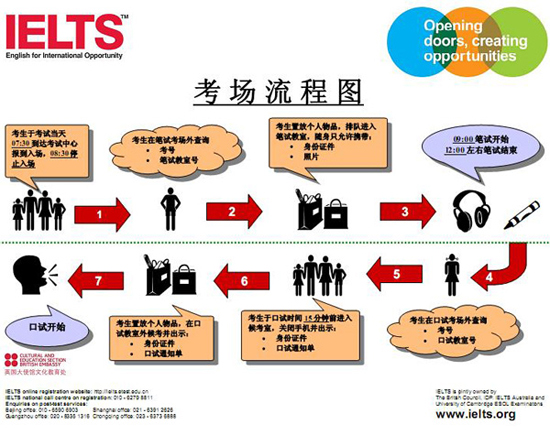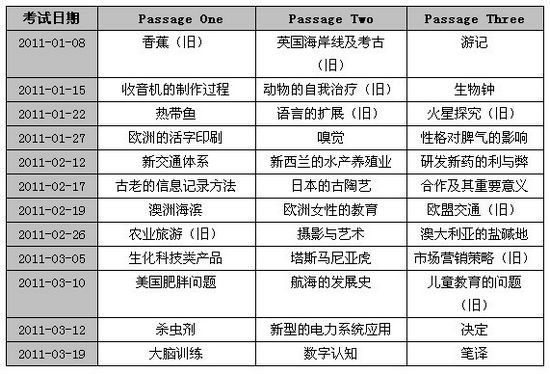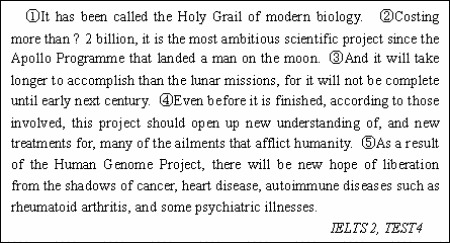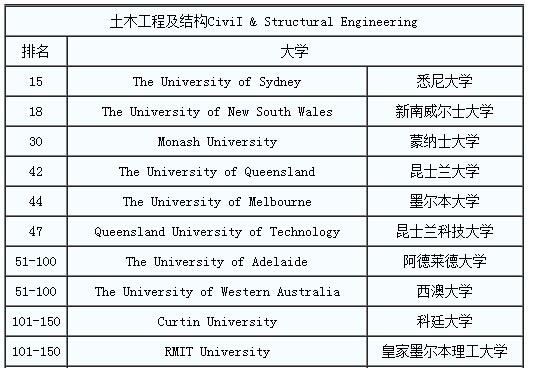来自:查字典高考网 2014-12-25
MAYA
1.Maya Culture
The Maya are probably the best-known of the classical civilizations of Mesoamerica. Originating in the Yucatn around 2600 B.C., they rose to prominence around A.D. 250 in present-day southern Mexico, Guatemala, northern Belize and western Honduras. Building on the inherited inventions and ideas of earlier civilizations such as the Olmec, the Maya developed astronomy, calendrical systems and hieroglyphic writing. The Maya were noted as well for elaborate and highly decorated ceremonial architecture, including temple-pyramids, palaces and observatories, all built without metal tools. They were also skilled farmers, clearing large sections of tropical rain forest and, where groundwater was scarce, building sizeable underground reservoirs for the storage of rainwater. The Maya were equally skilled as weavers and potters, and cleared routes through jungles and swamps to foster extensive trade networks with distant peoples.
Around 300 B.C., the Maya adopted a hierarchical system of government with rule by nobles and kings. This civilization developed into highly structured kingdoms during the Classic period, A.D. 200-900. Their society consisted of many independent states, each with a rural farming community and large urban sites built around ceremonial centres. It started to decline around A.D. 900 when - for reasons which are still largely a mystery - the southern Maya abandoned their cities. When the northern Maya were integrated into the Toltec society by A.D. 1200, the Maya dynasty finally came to a close, although some peripheral centres continued to thrive until the Spanish Conquest in the early sixteenth century.
Maya history can be characterized as cycles of rise and fall: city-states rose in prominence and fell into decline, only to be replaced by others. It could also be described as one of continuity and change, guided by a religion that remains the foundation of their culture. For those who follow the ancient Maya traditions, the belief in the influence of the cosmos on human lives and the necessity of paying homage to the gods through rituals continues to find expression in a modern hybrid Christian-Maya faith.
Cosmology and Religion
The ancient Maya believed in recurring cycles of creation and destruction and thought in terms of eras lasting about 5,200 modern years. The current cycle is believed by the Maya to have begun in either 3114 B.C. or 3113 B.C. of our calendar, and is expected to end in either A.D. 2011 or 2012.
Maya cosmology is not easy to reconstruct from our current knowledge of their civilization. It seems apparent, however, that the Maya believed Earth to be flat and four-cornered. Each corner was located at a cardinal point and had a colour value: red for east, white for north, black for west, and yellow for south. At the centre was the colour green.
Some Maya also believed that the sky was multi-layered and that it was supported at the corners by four gods of immense physical strength called Bacabs. Other Maya believed that the sky was supported by four trees of different colours and species, with the green ceiba, or silk-cotton tree, at the centre.
Earth in its flat form was thought by the Maya to be the back of a giant crocodile, resting in a pool of water lilies. The crocodiles counterpart in the sky was a double-headed serpent - a concept probably based on the fact that the Maya word for sky is similar to the word for snake. In hieroglyphics, the body of the sky-serpent is marked not only with its own sign of crossed bands, but also those of the Sun, the Moon, Venus and other celestial bodies.
Heaven was believed to have 13 layers, and each layer had its own god. Uppermost was the muan bird, a kind of screech-owl. The Underworld had nine layers, with nine corresponding Lords of the Night. The Underworld was a cold, unhappy place and was believed to be the destination of most Maya after death. Heavenly bodies such as the Sun, the Moon, and Venus, were also thought to pass through the Underworld after they disappeared below the horizon every evening.
Very little is known about the Maya pantheon. The Maya had a bewildering number of gods, with at least 166 named deities. This is partly because each of the gods had many aspects. Some had more than one sex; others could be both young and old; and every god representing a heavenly body had a different Underworld face, which appeared when the god died in the evening
?xml:namespace prefix = o ns = urn:schemas-microsoft-com:office:office
2.The Maya Calendar:
The Maya kept time with a combination of several cycles that meshed together to mark the movement of the sun, moon and Venus. The Maya calendar in its final form probably dates from about the 1st century B.C., and may originate with the Olmec civilization. It is extremely accurate, and the calculations of Maya priests were so precise that their calendar correction is 10,000th of a day more exact than the standard calendar the world uses today.
Of all the ancient calendar systems, the Maya and other Mesoamerican systems are the most complex and intricate. They used 20-day months, and had two calendar years: the 260-day Sacred Round, or tzolkin, and the 365-day Vague Year, or haab. These two calendars coincided every 52 years. The 52-year period of time was called a bundle and meant the same to the Maya as our century does to us.
The Sacred Round of 260 days is composed of two smaller cycles: the numbers 1 through 13, coupled with 20 different day names. Each of the day names is represented by a god who carries time across the sky, thus marking the passage of night and day. The day names are Imix, Ik, Akbal, Kan, Chicchan, Cimi, Manik, Lamat, Muluc, Oc, Chuen, Eb, Ben, Ix, Men, Cib, Caban, Eiznab, Cauac, and Ahau. Some of these are animal gods, such as Chuen (the dog), and Ahau (the eagle), and archaeologists have pointed out that the Maya sequence of animals can be matched in similar sequence to the lunar zodiacs of many East and Southeast Asian civilizations.
3.Writing and Hieroglyphics:
The Maya writing system is considered by archaeologists to be the most sophisticated system ever developed in Mesoamerica.
The Maya wrote using 800 individual signs or glyphs, paired in columns that read together from left to right and top to bottom. Maya glyphs represented words or syllables that could be combined to form any word or concept in the Mayan language, including numbers, time periods, royal names, titles, dynastic events, and the names of gods, scribes, sculptors, objects, buildings, places, and food. Hieroglyphic inscriptions were either carved in stone and wood on Maya monuments and architecture, or painted on paper, plaster walls and pottery.
The unit of the Maya writing system is the glyphic cartouche, which is equivalent to the words and sentences of a modern language. Maya cartouches included at least three or four glyphs and as many as fifty. Each cartouche contained various glyphs, as well as prefixes and suffixes. There is no Maya alphabet.
Maya writing is difficult to interpret for a number of reasons. First, glyphs do not represent just sounds or ideas, they can represent both, making it difficult to know how each glyph or cartouche should be read. In addition, many Maya glyphs can have more than one meaning, and many Maya concepts can be written in more than one way. Numbers, for example, can be written with Maya numerical symbols or with the picture of a god associated with that number, or a combination of the two. Some glyphs represent more than one phonetic sound, while also representing an idea. This means that a single idea can be written in many different ways. For example, the name of the Palenque ruler, Pacal, whose name literally means Hand-shield, appears sometimes as a picture of a hand-shield, sometimes phonetically as pa-cal-la, and at other times as a combination of picture symbols and phonetics.
【阅读辅导:托福考试阅读背景知识(十四)】相关文章:
[标签:海外留学,语言考试,托福,,]
 雅思考试考场流程图
雅思考试考场流程图  2011第一季度雅思阅读回顾与解析
2011第一季度雅思阅读回顾与解析  雅思vs托福 阅读异同大盘点对照表
雅思vs托福 阅读异同大盘点对照表  中学生雅思阅读快速提高的秘密
中学生雅思阅读快速提高的秘密  澳洲留学热门专业:土木工程专业排名
澳洲留学热门专业:土木工程专业排名  雅思听力周周练第四期-参赛篇
雅思听力周周练第四期-参赛篇 视频|2019全国高考今日开考: 语文特级教师评析上海卷高考作文
探秘历史 第二季 第233集 考英语用来睡觉,结果仍是高考状元,如今她怎么样了?
学渣儿子高考,英语选择题全选B!老师通报成绩的那一刻父亲懵了
广州早晨 2019 山西一高中班主任带学生骑行1800公里去上海
1000张学生用草稿纸考研专用免邮空白便宜薄演草演算纸白纸本书写纸批发打草a4大张实惠装18k高考数学草稿本
高中语文知识清单高考语文总複习工具书第5次修订五全綵版五三曲一线科学备考基础知识手册知识大集结资料书参考书导书高一高二高三
美术联考用纸上海考试模拟试卷纸高考统考纸 4k水粉纸素描纸 速写纸卡纸美术模拟测试试卷纸 美术考试专用纸
一边扔试卷一边玩摇滚?这个学校的高考减压方式,真是帅到没朋友
沈阳音乐学院郎亦农教授的女高音高考曲目解析课程 第9集 《赛吾里麦》演唱讲解,音乐表现一定要自然流畅